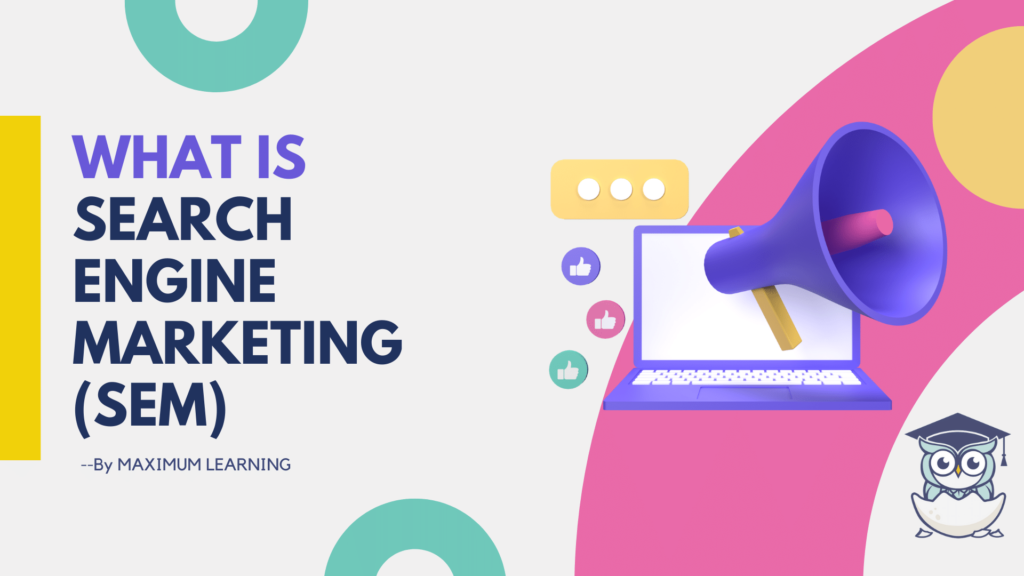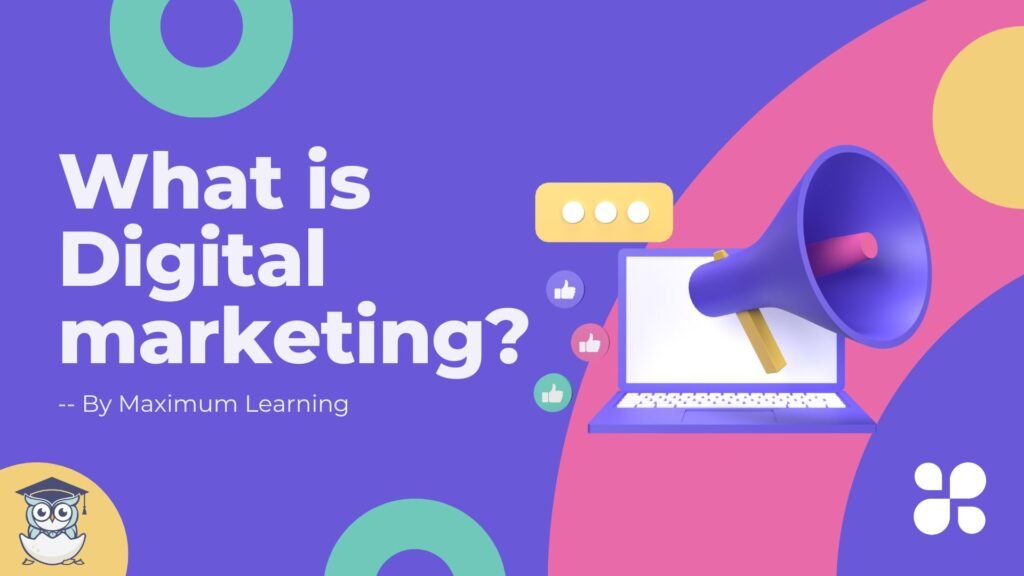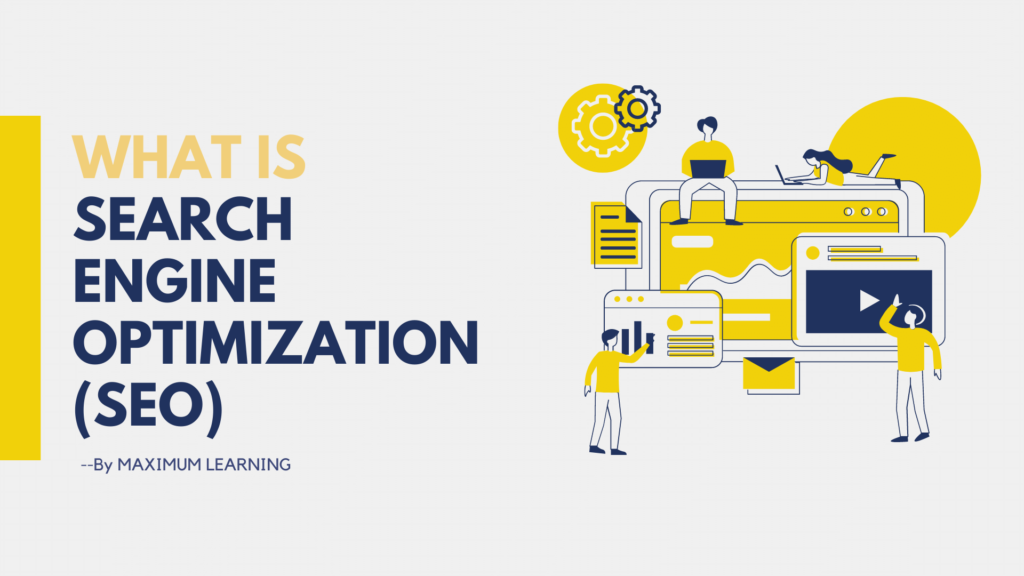SEM, or search engine marketing, is a very efficient approach to boost your website’s rating on search engines like Google and draw in targeted traffic. You may raise brand awareness and boost sales by making an investment in SEM.
What is Search Engine Marketing (SEM)
The goal of SEM, a form of digital marketing strategy, is to place your business or your customer on the first page, if not the top spot, of search engine results. This will help you to increase the amount of traffic to your website, which you can then convert.
All the tools, methods, and tactics used in search engine marketing are meant to increase the visibility of websites and web pages in Google and other comparable search engines.
The top of the results can be reached in one of two ways.
Organic Ranking – The centre of the page often displays organic or natural results, which are chosen by Google’s algorithm. This algorithm evaluates the website’s authority as well as its relevancy (the calibre of the information and how well it responds to a particular search) (links from other pages).
Paid Ranking – In a column to the right of the organic results, paid results are also included at the top of the page. In contrast to organic results, the advertiser here must pay a certain sum for each click on their advertisement. It is vital to make use of tools like Google Ads in order to purchase advertising space on search engines.
Both types of results are theoretically covered by search engine marketing. However, in reality, strategies targeted at enhancing organic positioning go under the SEO umbrella, while strategies aimed at appearing in paid search results fall under the SEM umbrella. We’ll refer to the latter as SEM, or search engine marketing, to avoid any misunderstandings.
In order to optimise search engine advertising, appear in the top places, obtain reduced costs per click, and increase conversions from these ads, search engine marketing entails a number of tools, tactics, and strategies. Although Google Ads is the most well-known and frequently utilised SEM platform, there are other options, such as Bing Ads.
Concepts for Search Engine Marketing
Keywords are the phrases that people type into search engines to cause a specific advertisement or search result to be shown. They don’t need to be separate terms. In reality, using phrases like “purchase Nike sneakers” or “what is the greatest accounting software” is quite frequent.
Congruence: You must specify the degree of similarity between the keywords you have chosen and the terms that people use when entering a search query into a search engine when setting up a campaign in Google Ads. “Concordance” is the term for this. For instance, if you select a broad match, the advertisement will appear whenever the user searches for words or phrases that are similar to the keyword. If you choose an exact match, the advertisement will only show up when a user types in a particular keyword into the search engine.
Text Ads: Although there are now many possibilities, such as shopping advertisements, text advertising are still the most common sort of advertisement displayed in search engines. Text advertisements often have a title, an editable accessible URL, and a succinct description.
An Ad Group in Google Ads is made up of numerous advertisements using the same keywords. You can determine which of them is the most efficient in this manner.
Campaign: In Google Ads, the campaign serves as an organisational “umbrella” for several ad groups with related objectives. If you sell school supplies online, for instance, one campaign would feature ad groups with textbooks, another might have backpacks, and a third might concentrate on drawing tools.
Landing Page: When a user clicks on an advertisement, they are transported to a landing page. This page needs to be optimised to get conversions and persuade users to perform specific actions in order to see positive results with search engine marketing (like completing a form to download an ebook). To guarantee a positive user experience, the landing page, keywords, and displayed ad should all be coordinated.
Your adverts will appear on the search network in this area. Although you can also show them on other websites like YouTube, the most popular option is at the top and right of the results page.
Impressions: how many times an advertisement was displayed.
CTR is the proportion of clicks to total impressions and clicks are the number of times an advertisement has been clicked.
CPC stands for cost per click on average.
The Quality Score, which Google assigns to advertising and keywords, affects your cost per click. This rating is based on the quality of the landing page, the percentage of clicks received, and the relevance of the advertisement. The goal of this method is for higher quality ads to appear in more prominent positions and cost less per click.
Why SEM is Important for Your Company & What Are Its Benefits?
Good Quality Traffic
Organic traffic generation can be a very time-consuming, laborious procedure with long-term consequences. You can speed up this procedure and draw visitors to your website right away with search engine marketing. Additionally, because these users looked for what you have to give, you can be confident that they are interested in what you have to offer.
Brings more visibility
Even if a customer does not click on your brand the first time they see it, showing up in the top results of Google and other search engines links your brand with a certain demand.
More conversions
The improvement of company outcomes is the ultimate objective of Google Ads and other search engine marketing tools. Create optimised landing pages that guide users toward conversion in order to do this.
Ensures You Get the Most for Your Money
The fact that search engine marketing is a good option for businesses of all sizes because the minimum investment is so low is one of its many benefits. On the other side, if your brand is expanding, you can up your campaigns’ complexity and investment to maintain their momentum. Additionally, you can be sure that your budget is being used wisely because you only pay if you receive results (in the form of clicks).
Achieves measurable outcomes
Solutions for search engine marketing, like Google Ads, offer a variety of metrics on campaigns and keep you updated at all times. This makes it very simple to alter the route if necessary and achieve better outcomes.
SEM vs SEO
SEM is a digital marketing technique used to improve the visibility of your website in search results. Both paid and unpaid (SEO) activities can fall under this category.
Pay-per-click (PPC) marketing is another name for search engine marketing (SEM), which in general includes more than just paid advertising. With this business model, advertisers receive payment each time a user hits their advertisement.
The term “organic results” in SEO, on the other hand, refers to “free” traffic obtained as a result of publishing pertinent, helpful content that ranks highly on Google.
An efficient SEO plan can help you generate long-term traffic, and search engine advertisements can increase your visibility and generate clicks from potential customers.
SEM is a complicated phrase, but from this point on we’ll use it to refer to a paid search strategy.
SEM, or search engine marketing, and Search Engine Optimization (SEO), both offers a tremendous deal of promise to assist businesses effectively achieving their objectives. It is crucial to have professionals with considerable experience situating companies in Google so that you can get the most out of it.
If you want to learn more about SEM, SEO or about Digital Marketing in full, then we recommend checking out our online and offline courses of digital marketing. Join our course and bring a change and advance in your career with our special internship style training courses.





